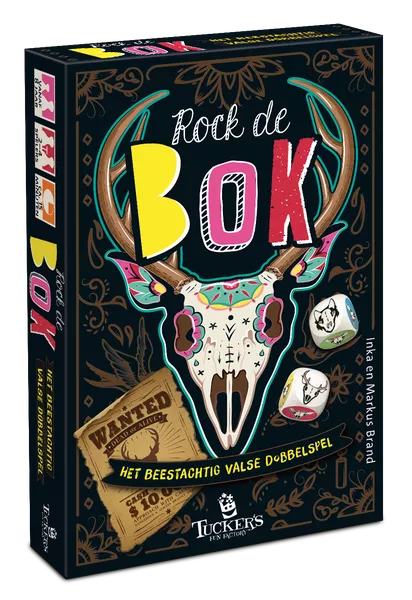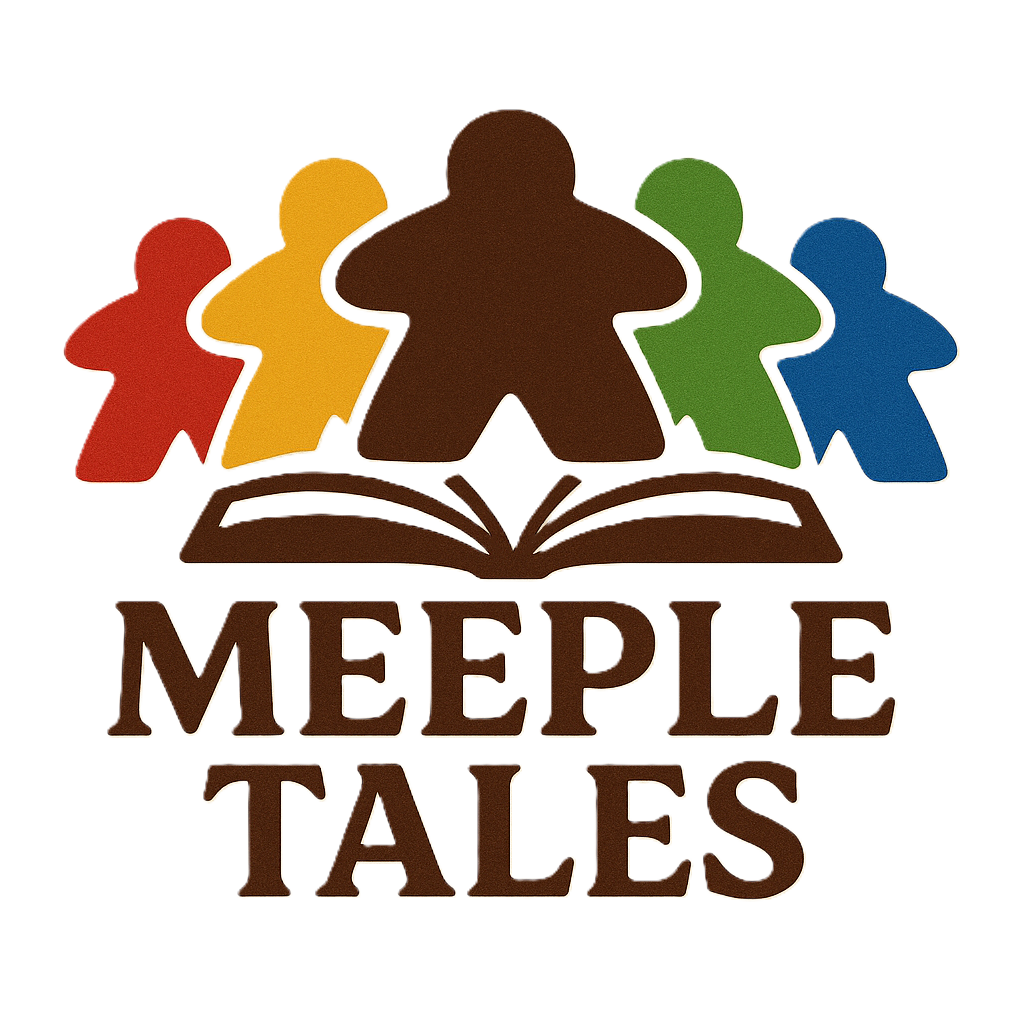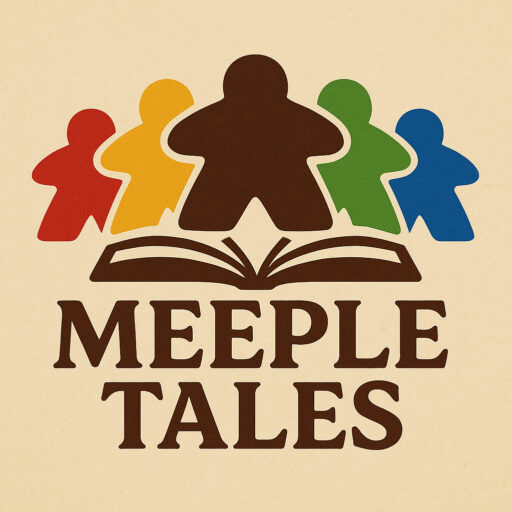Aantal spelers: 2-4
Speelduur: 15 minuten
Leeftijd: Vanaf 8 jaar
Auteur: Inka Brand & Markus Brand
Uitgever: Tucker’s Fun Factory
Jaar: 2021


Dit is een herpublicatie van een review die ik eerder schreef voor bordspelwereld.nl
Tja. Daar zit ik dan. Achter mijn laptoppie. Om nog een review te schrijven van een Roll&Write. Onlangs schreef ik nog dat deze gamesoort ondanks de marktverzadiging in mijn hoofd juist terrein won. Calavera kon door wat meer diepgang, maar mede ook door de mooie art van Kreativbunker mijn goedkeuring meer dan wegdragen. Vurig hoopte ik dat Rock de Bock, uit dezelfde vormgevingskoker mij net zo zou enthousiasmeren. Maar met vormgeving alleen kom je er niet. En helaas moeten bedenkers Inka & Markus Brand, ondanks de grote fysieke gelijkenissen, qua spel wat mij betreft hun meerdere erkennen in Calavera.
Hoewel twee verschillende soorten Roll & Writes, mist deze de variatie en strategische keuzes die zijn soortgenoot zo leuk maakte! Tja, ik val maar met de deur in huis. Natuurlijk verdient elk spel ook gewoon een review en is niet alles op een weegschaal te leggen. Als reviewer ontkom je er vaak alleen niet aan om toch de vergelijking te maken. Zeker wanneer je veel spellen speelt vraag je je al snel af of een spel nog iets toevoegt aan het spelletjeslandschap. Of dat het een spel is die je persee in de kast wilt hebben of nog eens uit de kast zal halen. Als je dan meteen weet dat er andere spellen zijn die je altijd eerder uit de kast zal halen, weet je dat er aan een spel iets ontbreek. Of dat je teveel spellen hebt, dat kan natuurlijk ook. Ik vrees in dit geval dat beide waar is.
Nou begeeft dit spel zich ook wel op een moeilijk terrein. Roll & Writes zijn toch een beetje een dubieuze categorie. Het zijn niet de meest ingewikkelde en diepgaande spellen en voor expert spelers wat simpel en voor sommige spelers zelfs een doorn in het oog. Anderzijds bedienen ze een hele grote markt en zijn we er dol op. Consumenten verslinden dit soort spellen. Anderzijds is de hype misschien ook wel over zijn hoogtepunt heen en moet je dus van goede huizen komen om iemand nog te overtuigen of om vernieuwend te zijn. Maar ook wanneer een spel niet vernieuwend is, hoop je op een concept dat overeind blijft staan. Bij Rock de Bock weet ik het zo net nog niet. Ik hink op twee gedachtes.
Ik neem je even mee in het spel. In dit spel start je met 10 dobbelstenen die je mag dobbelen totdat ze op zijn en je er geen meer opzij kan leggen. Dit gaat in verschillende beurten. Het aantal beurten varieert en is afhankelijk van hoeveel dobbelstenen je per beurt opzij legt. Je speelt door tot alle dobbelstenen op zijn. Dit doe je drie rondes. In de rondes verdien je punten. De speler met de meeste punten wint. Easy de peasy.
Op de dobbelstenen dit keer geen cijfers of enkel kleuren. Maar: Een wolf, een bok, en 4 geiten in de kleuren rood, groen, geel en blauw. Voor het spel begint bepaalt een ieder welke kleur hij of zij is. Dit zijn de kleuren geiten die je gaat verzamelen en waar je er zoveel mogelijk van wilt, want ze zijn punten waard. Of nou ja, dat hoop je. Je krijgt alleen punten voor je geiten als je in de ronde méér bokken dan wolven hebt. Bij meer wolven dan bokken zijn je geiten minpunten. Bij een gelijkstand gebeurt er niets.
Hoe gaat dit allemaal te werk:
Op je papiertje zie je zowel de wolven, de bokken als de geiten, en vakjes die je dobbelstenen representeren. Er zijn 10 dobbelstenen dus in theorie kun je in een ronde er per soort maximaal 10 gooien. Er staan dus 30 dieren afgebeeld, waarvan je er dus 10 afstreept per ronde: want 10 dobbelstenen.
Als je werpt kies je wat je wilt houden en af wilt kruizen: De bokken of de geiten. Wolven die je gooit kruis je niet zelf af, die geef je aan een medespeler. De medespeler kruist deze af op zijn of haar blaadje.
Naast het dier dat je kiest kruis je ook een aantal dobbelstenen af. Heb je drie bokken gekozen, kruis je op je blaadje drie dobbelstenen af. Dit is om bij te houden met hoeveel dobbelstenen je je volgende worp/beurt nog mag gooien. In dit voorbeeld zouden dit dus nog zeven dobbelstenen zijn. Na je worp gaat de beurt naar de volgende speler.
Wanneer je een wolf weggeeft streep je óók het aantal dobbelstenen af. Ookal kruis zelf je geen dier af. De speler die de wolf ontvangt hoeft geen dobbelstenen af te strepen.
Dit herhaalt zich beurt voor beurt, net zo lang tot niemand meer dobbelstenen heeft om mee te spelen. Hierna tel je de punten zoals hierboven reeds beschreven.
Bovenstaande herhaalt zich drie rondes.
Na drie rondes tel je de uitkomst van de drie rondes bij elkaar op. De speler met de meeste punten wint.
Het spel heeft gepoogd wat diepgang te hebben, maar die komt wat mij betreft niet zo lekker uit de verf. Elke beurt sta je maar voor één keuze: wat streep ik af? Nou is dat natuurlijk ook simpelweg hét mechanisme en speltype, maar de keuzes die je hebt en strategisch zouden moeten zijn, zijn beperkt. De overwegingen zijn vrij simpel:
Wanneer je bokken speelt is dat leuk, maar het beschermt je enkel tegen wolven, het levert je geen punten op.
Veel geiten verzamelen is leuk, het levert veel punten op. Maar heb je hierdoor geen bokken en krijg je wel wolven, ben je de sjaak en zijn het minpunten!
Veel wolven aan medespelers geven is leuk, want: minpunten. Alleen je streept zelf niets af, verzamelt dus geen punten of bokken, maar levert wél dobbelstenen in.
Het kan zijn dat je gedwongen wordt iets af te strepen omdat je bijvoorbeeld alleen maar geiten in andermans kleur gooit met daarnaast een bok en/of wolf.
Heel veel meer is het niet. En dat maakt het wat saai. Doordat je in theorie één dobbelsteen per keer af zou kunnen strepen (mits je goed gooit, want van alle soorten die je kiest betekent het dat je alle af moet strepen), kan een ronde erg lang duren. Omdat de keuzes per beurt wat beperkt zijn, ging het voor ons erg als een repeterende handeling voelen. Omdat je 10 dobbelstenen verdeelt over drie dieren en één daarvan ook nog maar eens één punt op levert per stuk, speel je met lage getallen en dat voelt nogal onverzadigd. Zo lang rollen voor die ene schamele punt geeft niet echt voldoening.. Daarnaast ben je in je rollen erg afhankelijk van wat andere doen. Wanneer je ziet dat iemand er vandoor gaat met veel geiten en je gooit ze zelf niet, zul je niet snel voor de bokken kiezen. Die heb je zonder geiten niet nodig. Dan kun je beter uit damage controll wolven weg gaan geven aan de mensen met veel punten. Hierdoor voelde het voor ons ook niet of we echt een spelletje aan het doen waren omdat de uitkomst van de dobbelstenen en voorgaande worpen eigenlijk al erg aansturen op de juiste keuze van je huidige worp. Dit maakt het een saai spelletje waarin je eigen invloed beperkt is en je afhankelijk bent van wat je rolt. Dat moet je liggen en mij persoonlijk ligt dat dus niet. Je bent teveel afhankelijk van geluk.
Geniet je wel van enkel de spielerei en het pesten met wolven en voel je je niet beperkt in je keuzes of als je zelf weinig invloed hebt, dan is dit een leuk tussendoor spelletje.
Ik geef het een nipte voldoende omdat het concept wel gewoon staat. Simpel, eenvoudig, en voor mij saai, maar wel helder, doeltreffend en goed doorgevoerd. De vormgeving is wederom prachtig en het misstaat zeker niet in de kast. Leuk voor beginnende spelers, met kinderen of als introductie in het genre. Maar heb je al veel Roll & Writes in de kast, dan vrees ik dat deze snel op de plank met spellen belandt die niet gespeeld worden.

Rock de Bock
Players: 2-4
Time: 15 minutes
Age: 8+
Author: Inka Brand & Markus Brand
Publisher: moses. Verlag GmbH
Year: 2021


Well. There I am. Behind my laptoppie. To write another review of a Roll&Write. I recently wrote that this type of game was actually gaining ground in my mind despite the market saturation. Calavera could more than win my approval because of a bit more depth, but also because of the beautiful art by Kreativbunker. I fervently hoped that Rock de Bock, from the same design house, would enthuse me just as much. But design alone won’t get you there. And unfortunately, despite the great physical similarities, creators Inka & Markus Brand have to acknowledge their superiority to Calavera as far as I am concerned.
Although two different types of Roll & Writes, this one lacks the variety and strategic choices that made its peer so much fun! Well, I’ll just get right to the point. Of course, every game also just deserves a review and not everything can be put on a scale. As a reviewer, you often have to make comparisons. Especially when you play a lot of games, you quickly wonder if a game adds something to the gaming landscape. Or if it is a game you necessarily want to have on your shelf or will get out again. If you then immediately know that there are other games that you will always get out of the closet sooner, you know that a game is missing something. Or that you have too many games, which is also possible, of course. I fear in this case that both are true.
Well this game does tread in difficult territory. Roll & Writes are a bit of a dubious category. They are not the most complicated and in-depth games and for expert players somewhat simple and for some players even an eyesore. On the other hand, they serve a very large market and we love them. Consumers devour these kinds of games. On the other hand, the hype may have passed its peak and you have to come from good homes to convince anyone or be innovative. But even when a game is not innovative, you hope for a concept that stands up. I don’t know about Rock de Bock. I’m bouncing back and forth.
Let me take you through the game. In this game, you start with 10 dice that you get to roll until they run out and you can’t put any more aside. This is done in several turns. The number of turns varies and depends on how many dice you set aside per turn. You play on until all the dice are used up. You do this for three rounds. In the rounds, you earn points. The player with the most points wins. Easy de peasy.
On the dice this time no numbers or just colors. But: A wolf, a buck, and 4 goats in the colors red, green, yellow and blue. Before the game begins, each person decides what color he or she is. These are the colors of goats you will collect and want as many of as possible, because they are worth points. Or well, you hope so. You only get points for your goats if you have more bucks than wolves in the round. With more wolves than bucks, your goats are minus points. In case of a tie, nothing happens.
How does this all work?
On your paper you will see both wolves, bucks and goats, and boxes representing your dice. There are 10 dice so in theory you can roll a maximum of 10 per species in a round. So there are 30 animals pictured, of which you thus check off 10 per round: because 10 dice.
When you roll you choose what you want to keep and cross off: the bucks or the goats. Wolves you roll you don’t cross off yourself, you give them to a fellow player. The fellow player crosses them off on his or her sheet.
In addition to the animal you choose, you also cross off a number of dice. If you chose three bucks, you cross off three dice on your sheet. This is to keep track of how many more dice you may roll your next roll/ turn. So in this example, this would be seven dice left. After your roll, the turn goes to the next player.
When you give away a wolf, you also cross off the number of dice. Even if you don’t cross off an animal. The player who receives the wolf does not have to remove any dice.
This is repeated in turn until no one has any dice left to play with. After this you count the points as already described above.
The above repeats itself for three rounds.
After three rounds, add up the results of the three rounds. The player with the most points wins.
The game has attempted to have some depth, but it doesn’t come off very well as far as I’m concerned. Each turn you are faced with only one choice: what do I mark off? Well, of course, that is also simply the mechanism and game type, but the choices you have and should be strategic are limited. The considerations are pretty simple:
When you play bucks it’s fun, but it only protects you from wolves, it doesn’t get you points.
Collecting lots of goats is nice, it earns lots of points. But if you don’t have bucks because of this and you do get wolves, you’re screwed and it’s minus points!
Giving lots of wolves to fellow players is fun, because: minus points. However, you don’t get rid of anything yourself, so you don’t collect points or bucks, but you do get dice.
You may be forced to mark something off because, for example, you only throw goats in another player’s color with a buck and/or wolf next to it.
Not a whole lot more. And that makes it somewhat boring. Because you could theoretically check off one die at a time (provided you roll well, because of all the species you choose, it means you have to check off all of them), a round can take a very long time. Because the choices per turn are somewhat limited, it started to feel very much like a repetitive act to us. Because you divide 10 dice among three animals and one of them also only yields one point each, you’re playing with low numbers and that feels rather unsaturated. Rolling that long for that one paltry point is not very satisfying…. In addition, in your rolls you are very dependent on what others are doing. When you see someone running off with a lot of goats and you don’t throw them yourself, you won’t easily choose the goats. You don’t need those without goats. Then you’re better off giving away wolves out of damage control to the people with lots of points. This also made us feel like we weren’t really playing a game because the outcome of the dice and previous rolls are already very much driving the correct choice of your current roll. This makes it a boring game where your own influence is limited and you depend on what you roll. That has to suit you and so it does not suit me personally. You depend too much on luck.
If you do enjoy just the gameplay and bullying with wolves and don’t feel limited in your choices or if you have little influence yourself, then this is a fun in-between game.
I give it a narrow enough because the concept does just stand. Simple, straightforward, and boring to me, but clear, effective and well-executed. Once again, the design is beautiful and it certainly doesn’t look out of place in your closet. Great for beginning players, with kids or as an introduction to the genre. But if you already have a lot of Roll & Writes in your closet, I fear this one will quickly end up on the shelf with games that don’t get played.

